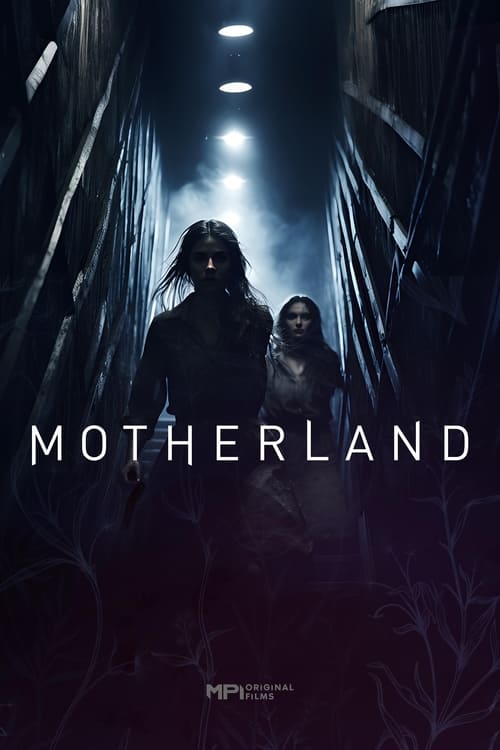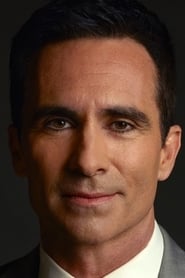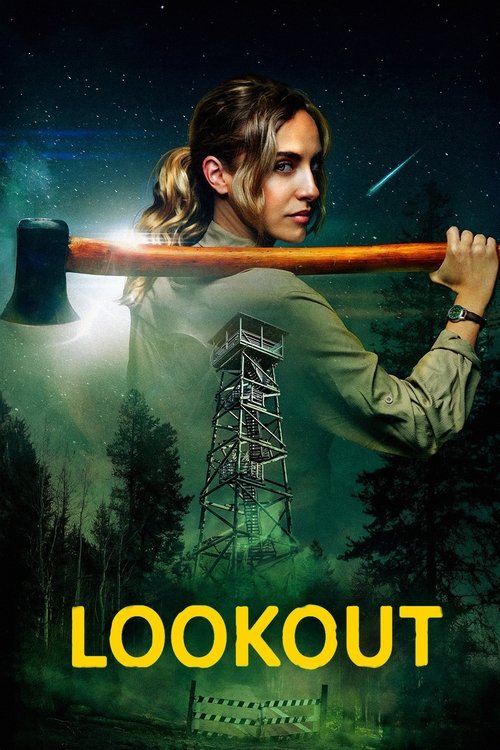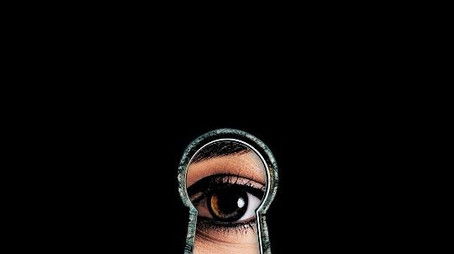
Ask Your Own Question
What is the plot?
Sorry, we aren't able to watch and write up a full detailed plot yet. Check back in a few days.
What is the ending?
The ending of Motherland (2025) centers on Cora's rebellion against the state's system after discovering that Zinnia, a young woman she oversees, is actually her daughter taken from her at birth. Despite the state's efforts to suppress dissent, Cora and other women who share her pain attempt to resist the oppressive regime. The film closes on a somber note, with Cora's rebellion ignited but the future uncertain for her, Zinnia, and the other characters caught in the system.
In the final sequence of Motherland, the story unfolds with Cora, a rule enforcer in a dystopian society where the state raises all children, grappling with the revelation that Zinnia, a teenager she monitors, is her biological daughter. This discovery comes after Cora notices a distinctive birthmark on Zinnia, triggering memories and emotions tied to the trauma of having her child taken away at birth.
The scene opens with Cora quietly observing Zinnia in the communal child-rearing center, her internal conflict growing as she recalls the pain of separation. Zinnia, meanwhile, is portrayed as compliant and even proud of her role in the system, ready to bear a child for the state as part of a new population-boosting initiative announced by the authorities. This contrast highlights the generational and emotional divide between mother and daughter.
Cora's growing empathy leads her to connect with other women who have suffered similar losses. They begin to organize quietly, seeking to challenge the state's harsh policies. However, the government quickly moves to suppress this budding resistance, using surveillance and intimidation to maintain control.
The climax features a tense confrontation where Cora openly defies the system, risking her position and safety. The film does not depict a clear victory; instead, it ends with Cora's rebellion just beginning, leaving her fate and that of Zinnia ambiguous. Zinnia remains loyal to the state's ideals, creating a poignant tension between personal bonds and societal indoctrination.
Other main characters, such as the state officials and communal caretakers, are shown enforcing the system's rules, embodying the oppressive regime. The film closes on a bleak, unresolved note, emphasizing the ongoing struggle between individual identity and authoritarian control.
Thus, the ending scene by scene:
- Cora recognizes Zinnia as her daughter through a birthmark.
- Cora's internal turmoil grows as she watches Zinnia embrace the state's role.
- The state announces a population initiative, selecting Zinnia to bear a child.
- Cora connects with other mothers who share her pain, and they begin to organize.
- The government cracks down on this resistance, using force and surveillance.
- Cora openly rebels, confronting the system despite the risks.
- The film ends with Cora's rebellion ignited but unresolved, Zinnia still aligned with the state, and the future uncertain for all.
This ending underscores the emotional cost of the state's policies on motherhood and identity, portraying a society where personal bonds are sacrificed for ideological control.
Is there a post-credit scene?
There is no specific information available about a post-credit scene in the 2025 movie "Motherland." The film, directed by Evan Matthews, explores a society where the state frees parents from raising children, and a rule enforcer discovers a shocking truth that sparks her rebellion. However, none of the available sources mention a post-credit scene for this movie. If such a scene exists, it would likely be revealed through reviews or discussions after the film's release.
What is Cora's role in the society of Motherland?
Cora is a rule enforcer in the society of Motherland. She is responsible for determining which young people best adhere to the rules, thereby earning them opportunities for better jobs. Her role involves maintaining order and ensuring compliance with the state's policies.
How does Cora discover her daughter Zinnia?
Cora discovers her daughter Zinnia when she recognizes a birthmark on the young woman. This revelation occurs at one of the children's centers where Cora works, leading her to reevaluate her past and her present circumstances.
What is the significance of the population boost initiative in the story?
The population boost initiative is significant because it involves Zinnia, Cora's daughter, as a candidate to bear a new child for the state. This development complicates Cora's situation, as she must navigate her loyalty to the system versus her desire to protect her daughter from undergoing the same experiences she did.
How does Cora's relationship with Zinnia evolve throughout the story?
Cora's relationship with Zinnia evolves as she learns the truth about Zinnia's identity. Initially, Zinnia is content with the system and willing to contribute to it by having a child. However, Cora's discovery sparks a desire to protect Zinnia from the same trauma she experienced, leading to a complex and emotionally charged dynamic between them.
What challenges do Cora and other women face in their attempts to challenge the system?
Cora and other women who share her pain face significant challenges when they attempt to unify and challenge the system. The powers that be actively work to suppress their efforts, creating obstacles and threats that make it difficult for them to organize effectively.
Is this family friendly?
Motherland (2025) is a dystopian thriller set in an alternate present where the state raises all children in centralized facilities, ostensibly to ensure fairness and relieve parents of child-rearing burdens. The film centers on a rule enforcer who uncovers a disturbing truth about the system and risks everything to protect a young woman in her care.
Family-Friendliness and Potentially Objectionable Content
Motherland is not recommended as a family-friendly film for young children or sensitive viewers. While the premise itself--state control over child-rearing--may provoke discomfort or anxiety, the film's tone and content amplify these concerns through specific scenes and emotional dynamics.
Potentially Upsetting or Objectionable Aspects
- Authoritarian Atmosphere: The film's world is cold and clinical, with children raised in sterile, institutional environments. Scenes depict emotional detachment between caregivers and children, and the absence of traditional family bonds may be unsettling for viewers who value close-knit family relationships.
- Intense Emotional Scenes: Characters experience profound loneliness, fear, and betrayal. There are moments where caregivers and children avoid eye contact, and the pervasive sense of isolation is visually emphasized through long, empty hallways and impersonal dormitories.
- Threats and Intimidation: The protagonist, as a rule enforcer, initially upholds the system's harsh policies. There are tense confrontations where authority figures use psychological pressure, gaslighting, and implied threats to maintain control. These scenes are not graphically violent but rely on psychological tension and the fear of consequences.
- Moral Dilemmas and Rebellion: The central character's growing disillusionment leads to acts of defiance. The stakes feel life-or-death, and the film conveys a constant sense of danger for those who challenge the system. The emotional weight of these choices--sacrificing safety for truth--could be distressing for sensitive viewers.
- Implied Violence and Consequences: While the film avoids explicit gore, it implies that dissenters face severe punishment, including disappearance or worse. The tension is sustained through suggestion and the characters' palpable fear, rather than on-screen violence.
- Themes of Loss and Control: The narrative explores loss of autonomy, the erasure of personal history, and the cost of conformity. These themes are presented through both dialogue and visual storytelling, such as newsreels that sanitize the truth and characters who are visibly haunted by their compliance.
Visual and Emotional Tone
The cinematography uses stark, industrial settings to reinforce the emotional chill of the world. The score is described as "softly chilling," enhancing the sense of unease. Characters often appear isolated within the frame, emphasizing their emotional disconnection.
Summary
Motherland (2025) is a well-crafted thriller that explores heavy themes of control, rebellion, and the cost of utopian ideals. It is not suitable for young children due to its intense emotional atmosphere, psychological tension, and implied threats. Sensitive viewers--especially those disturbed by themes of state control over family life, emotional detachment, and the consequences of dissent--may find certain scenes upsetting. The film's power lies in its ability to evoke discomfort through implication and mood rather than graphic content, but these elements make it inappropriate for a family audience seeking light or reassuring entertainment.





























